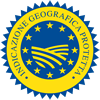Description
Asparago Verde di Altedo PGI is a fresh vegetable belonging to the species Asparagus officinalis L., deriving from the Eros, Marte, Franco, Giove, Ercole, Vittorio, Athos cultivars; a maximum of 20% of other cultivars may be present in the area of the crop.
Production Area
The production area of Asparago Verde di Altedo PGI is within numerous municipalities in the provinces of Ferrara and Bologna, in the Emilia Romagna region.
Production Method
The soil in the production area is sandy or sandy clay and is prepared for planting by tilling thoroughly to a depth of 40-60 cm; it is then well drained to avoid water stagnation. The young plants are planted during the last ten days of April; they are placed in pre-dug furrows that at least one metre and no more than 3.5 metres apart, with a depth of between 25 and 35 cm. The turions (fleshy shoots) are harvested two years after planting and the harvest can last for 15 to 65 days, based on how long they have been in the ground for; in any event, the harvest must be concluded by June 20th. The asparagus are then transported to processing centres where they are refrigerated in order to slow down the deterioration process.
Appearance and Flavour
Asparago Verde di Altedo PGI has a well-formed turion and a compact tip, which is occasionally slightly curved; it has a fresh, healthy and clean appearance, with no strange smells or flavours. It has a tender, delicate taste and is not fibrous.
History
The asparagus has a long and consolidated history in the Bologna area. Historical documents show that the origins, sale and culinary use of this product date back to the 13th century. However, it was only at the beginning of the 20th century that asparagus production began to take form, when several farmers from Altedo returned from Nantes, in France, and began cultivating with newly acquired techniques. This was the beginning of intensive asparagus cultivation, and after the Second World War it became the most diffused and widely practiced in the area.
Gastronomy
Asparago Verde di Altedo PGI is highly perishable and must therefore be kept at low temperatures and consumed soon after purchase. This vegetable has an excellent reputation and is traditionally used in local and regional dishes. It can be eaten boiled and seasoned with oil and salt, “au gratin”, or used as an ingredient in broths, soups, risottos and omelettes. Among the most renowned egg and fish-based main courses with asparagus, there is asparagus soufflé with prawn sauce and Monkfish with wild clam sauté on a bed of Asparago Verde di Altedo PGI tips. It should ideally be steam cooked in order to conserve the nutritional elements and original aroma. The product is also used in desserts and ice-cream.
Marketing
The product is marketed as Asparago Verde di Altedo PGI, in the following categories: Extra and First. It is sold in bunches ranging from 250 g to 3 kg, properly tied and cut evenly at the base. The asparagus bunches can be wrapped at the base with small strips of food-grade material suitable, or alternatively held together with tape. Asparagus destined for processing can also be delivered "in bulk", in packaging or containers that comply with regulations.
Distinctive Features
The unique organoleptic qualities of Asparago Verde di Altedo PGI are given to the particular composition of the soil and humid, foggy climate which are typical of the lower Po Valley, together with the traditional production methods handed down from generation to generation.

























